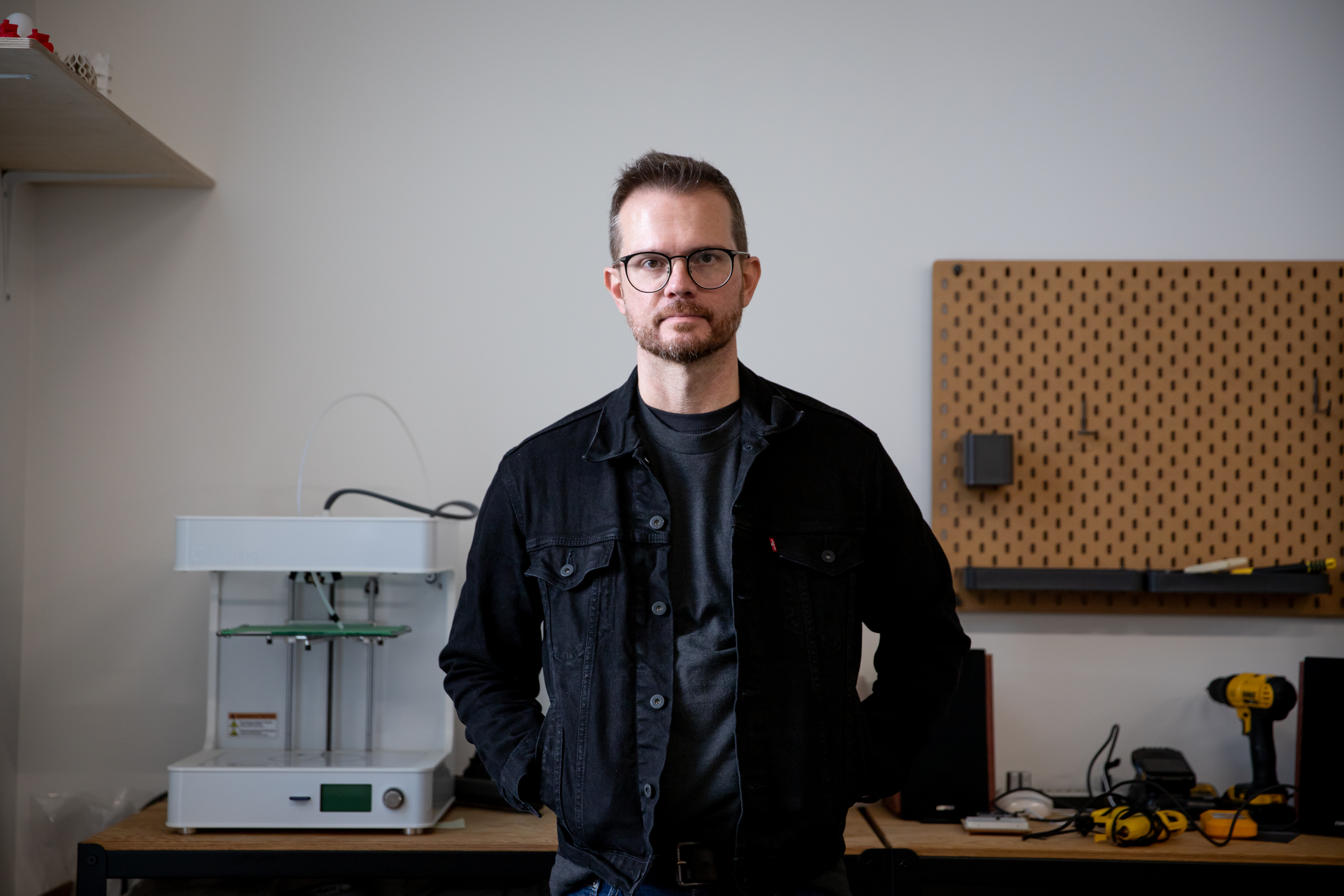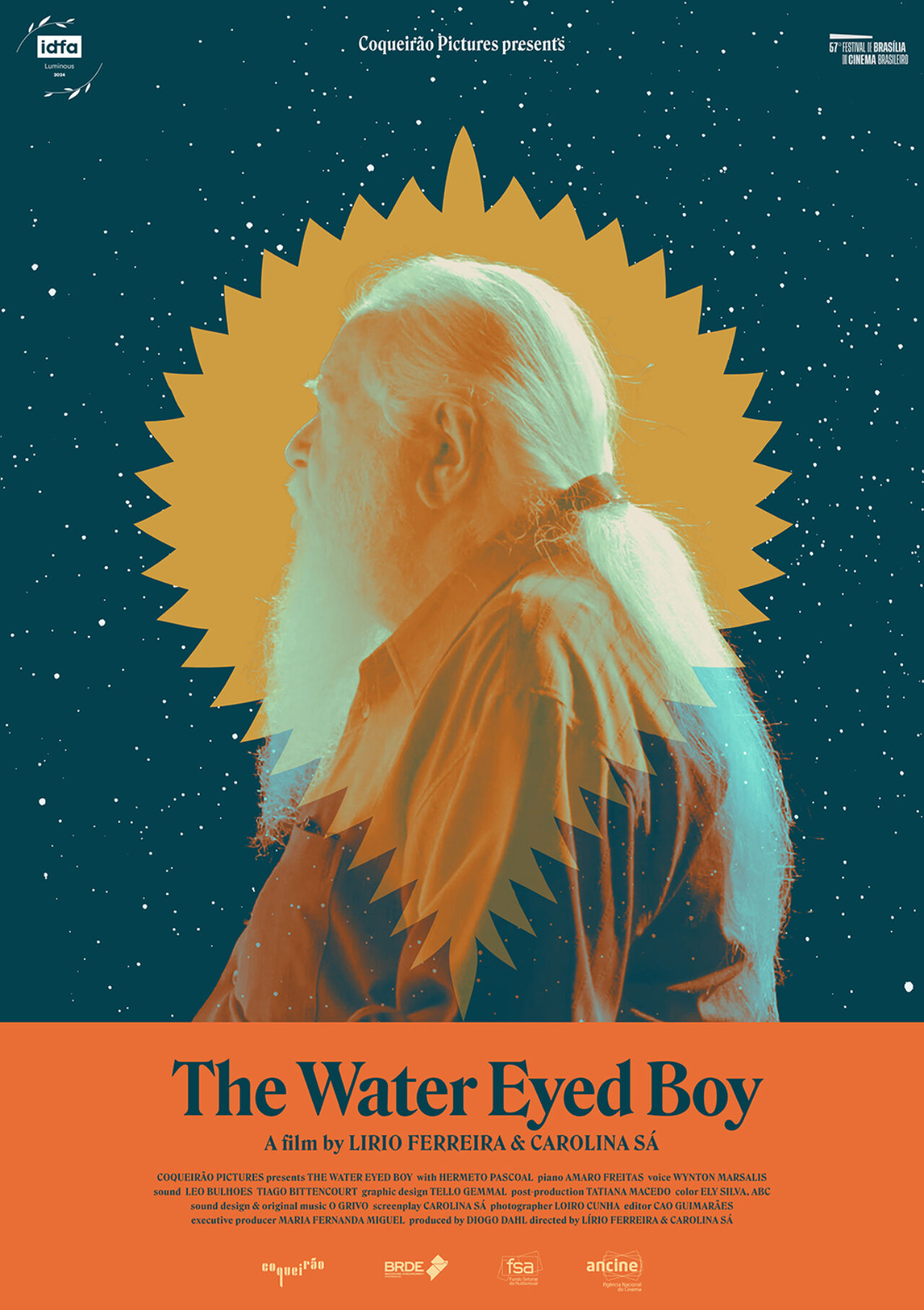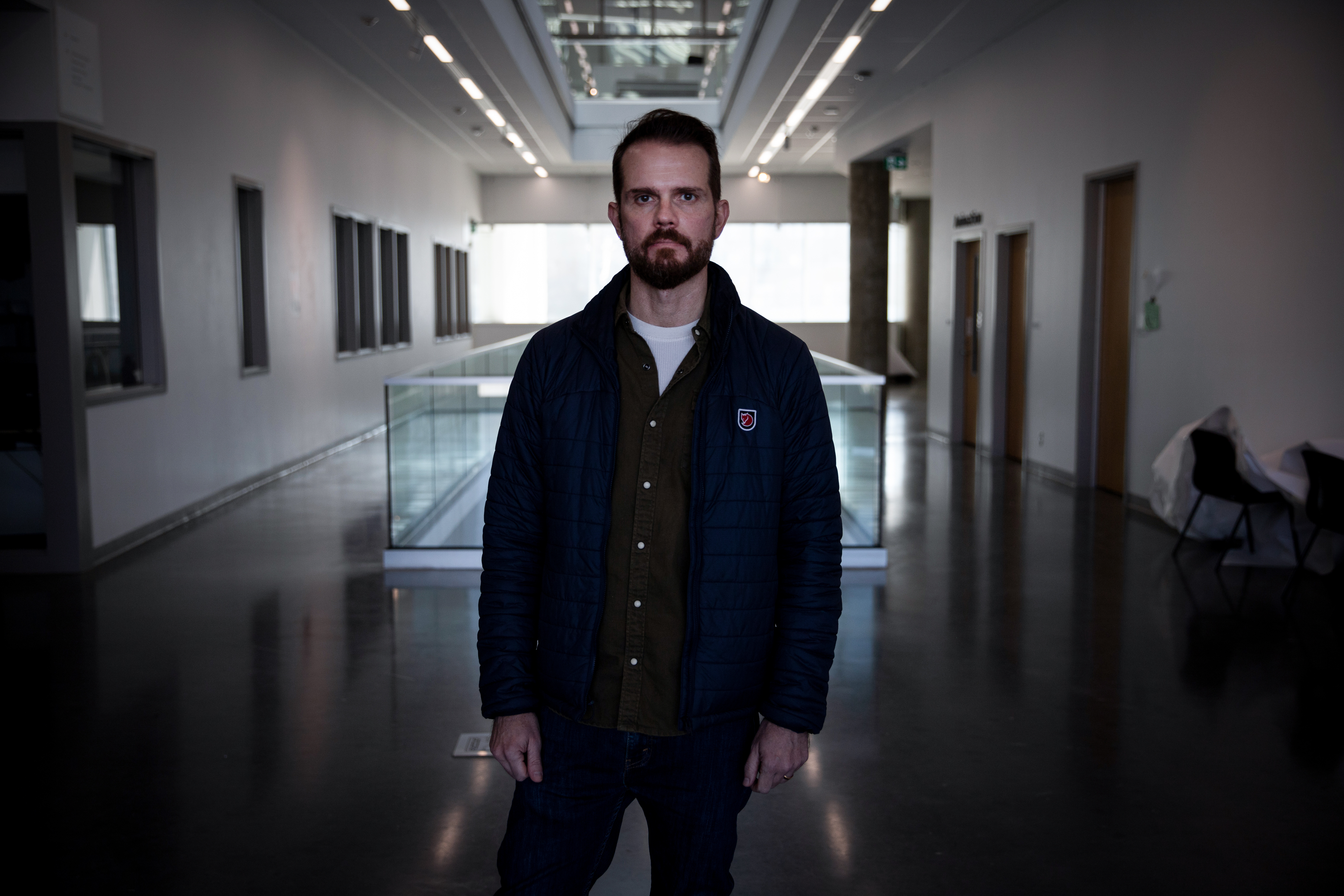Daniel Wildberger Finds Design Inspiration Embracing Brazilian Roots

“I think part of my role in this community is bringing these histories, these knowledges and ways of collaborating to the classroom and to design,” says Daniel Wildberger, pictured in one of the Interaction Design studios at Emily Carr University. (Photo by Perrin Grauer)
Posted on | Updated
The designer and ECU faculty member reconnected with his country’s rich cultural history, working on commissions for documentaries about seminal artistic figures.
A recent pair of collaborations with Brazilian filmmakers brought fresh inspiration and a renewed sense of purpose to designer and ECU faculty member Daniel Wildberger.
He says the value of embracing his roots was sparked by two commissions to create posters for documentaries focusing on the lives of Brazilian artists, many of them directly linked to Daniel’s home province of Bahia.
“Brazil is an important part of me and my work, but I found myself in a process of actually going back there through these collaborations,” he says. “It was as if Brazil is calling me, and I want to honour it. To me, this is an important kind of coming-together, coming full circle with my work and my relationship to it.”
The first film for which Daniel designed a poster is Trés Obás de Xangô, which won Best Documentary at the International Film Festivals in Rio de Janeiro and São Paulo. The film details the lives and close friendship of a trio of seminal Brazilian artists: Jorge Amado, one of Brazil’s most famous writers; Dorival Caymmi, a musician and singer whose work influenced iconic artists including João Gilberto, one of the key architects of Bossa Nova; and Carybé, a celebrated Argentine-Brazilian visual artist.


(Top): Daniel’s poster for Trés Obás de Xangô drew partly on the work of Carybé (bottom), one of the influential artists featured in the documentary. (Images courtesy Daniel Wildberger)
All three are connected to the province of Bahia, home to Salvador, Brazil’s first capital and Daniel’s hometown. Through music, literature, visual art and — importantly — friendship, the men are known for having helped define Bahian culture, Daniel says.
“In Bahia, we are known as being artistically inclined,” he says. “We tend to create a magical universe around us. It’s said if you give a Baiano five days to do a job, we take four to sing and dance and drink and eat and then do the job on the fifth day. And the job will be great because it’s infused with life. It’s a way of seeing the world and seeing life. And it forms the roots of what Brazil later became. These three artists helped create this identity.”
Partly, they did so through their representation of the Candomblé religion — an Afro-Brazilian tradition that merged religions of West and Central Africa with Indigenous and Roman Catholic influences. The title of the film, Trés Obás de Xangô, refers to the trio’s revered place in Candomblé. Obá is an honorific bestowed by a mãe de santo (priestess) or pai de santo (priest) upon a person seen as a defender of the religion, which for years had been criminalized and conducted in secret to avoid reprisals. In the Candomblé pantheon, Xangô is the patron Orixá (deity) of Brazil.
“Their involvement in Candomblé was a rebellious act, especially during the time of the dictatorship,” Daniel says of the artists. “So, they are protectors who helped create an identity that defined us.”
Daniel’s second poster was for O Menino d’Olho d’Água or The Water-Eyed Boy, which recently premiered at the IDFA Festival in Amsterdam. The film documents the life of Hermeto Pascoal, a similarly rebellious musician and mystic who Miles Davis once called “one of the most important musicians on the planet.”
“He creates his own sound, his own instruments and music,” Daniel says. “But he does so while looking to our traditions and our roots.”

Daniel’s poster for The Water-Eyed Boy (O Menino d’Olho d’Água) featuring an image of the acclaimed musician Hermeto Pascoal. (Image courtesy Daniel Wildberger)
As he worked on these two projects, Daniel, who teaches Interaction Design, began asking how he might advance the project started by these legendary artists and learn from their examples.
“I’ve been asking, what is my contribution to this conversation?” he says. “As a designer and educator, the way I speak to the world is through design, as well as through my teaching and research. I’ve been thinking about tools of co-creation that include layers of poetics to them – very much inspired by the poetics I see coming from these people. I think part of my role in this community is bringing these histories, these knowledges and ways of collaborating to the classroom and to design.”
For Daniel, this project represents a broader ambition to infuse design with a greater degree of “soul.”
“All of design needs that, I think, and interaction design is part of that big family,” he says. "I feel inspired by doing these pieces. They represent my goal, my inspiration, my moving forward.”
Follow Daniel on Instagram and visit his website to see more of his work.

